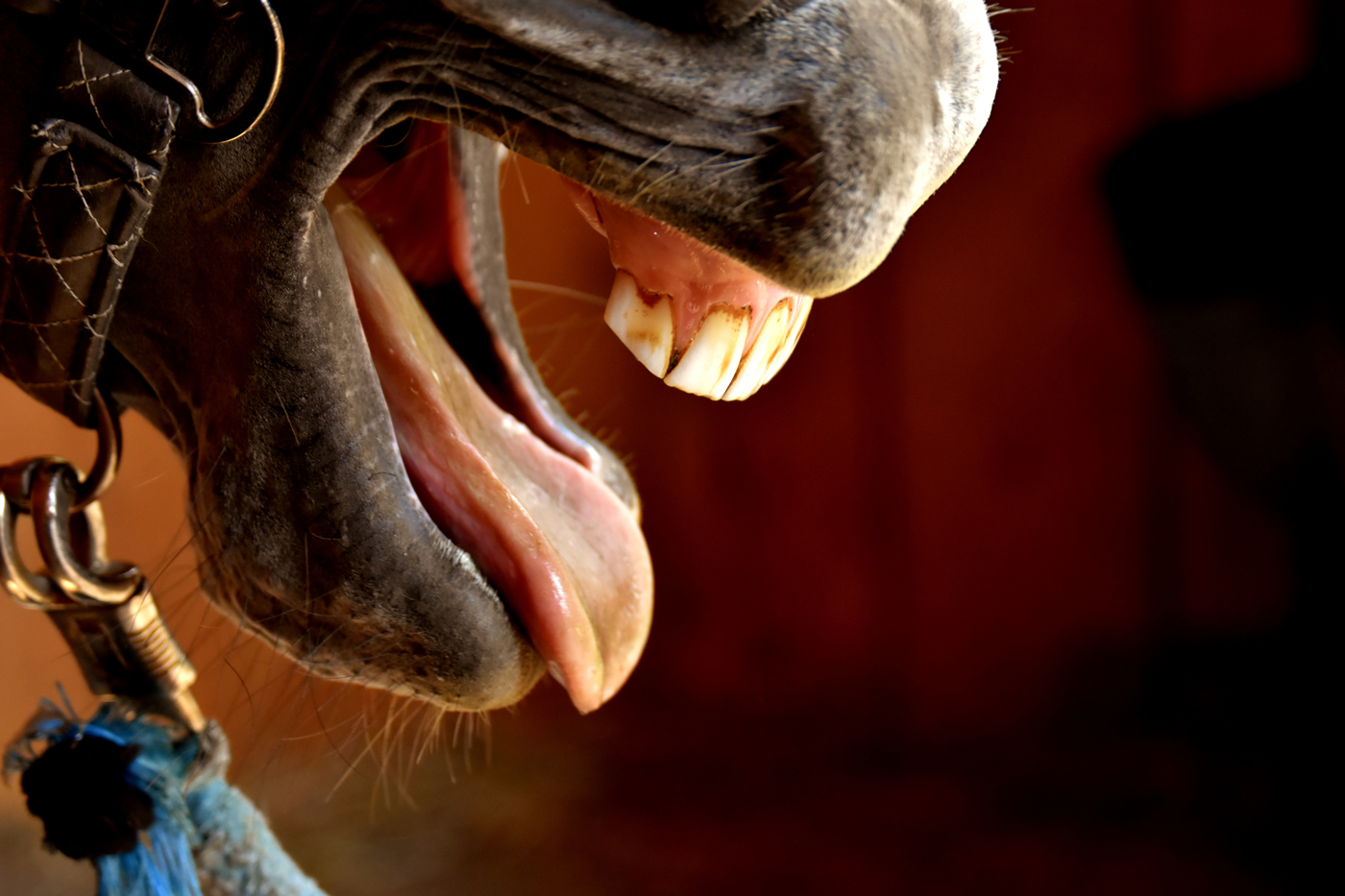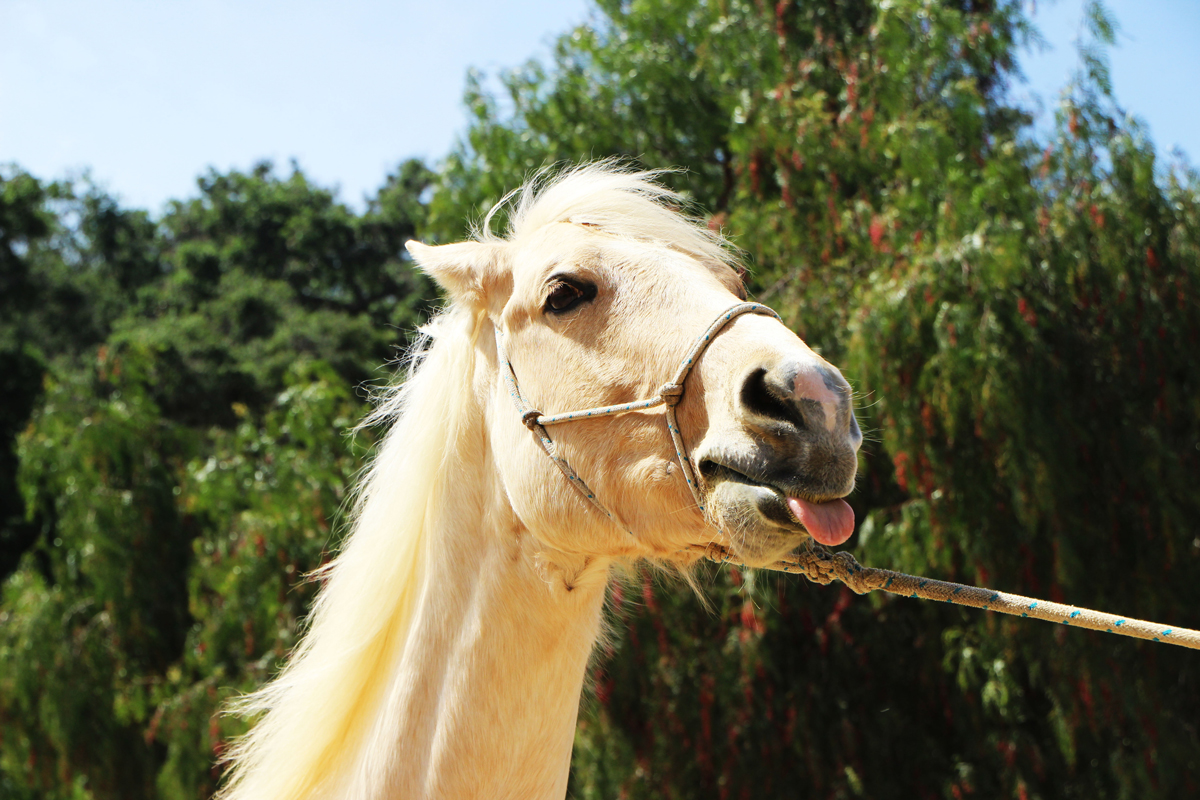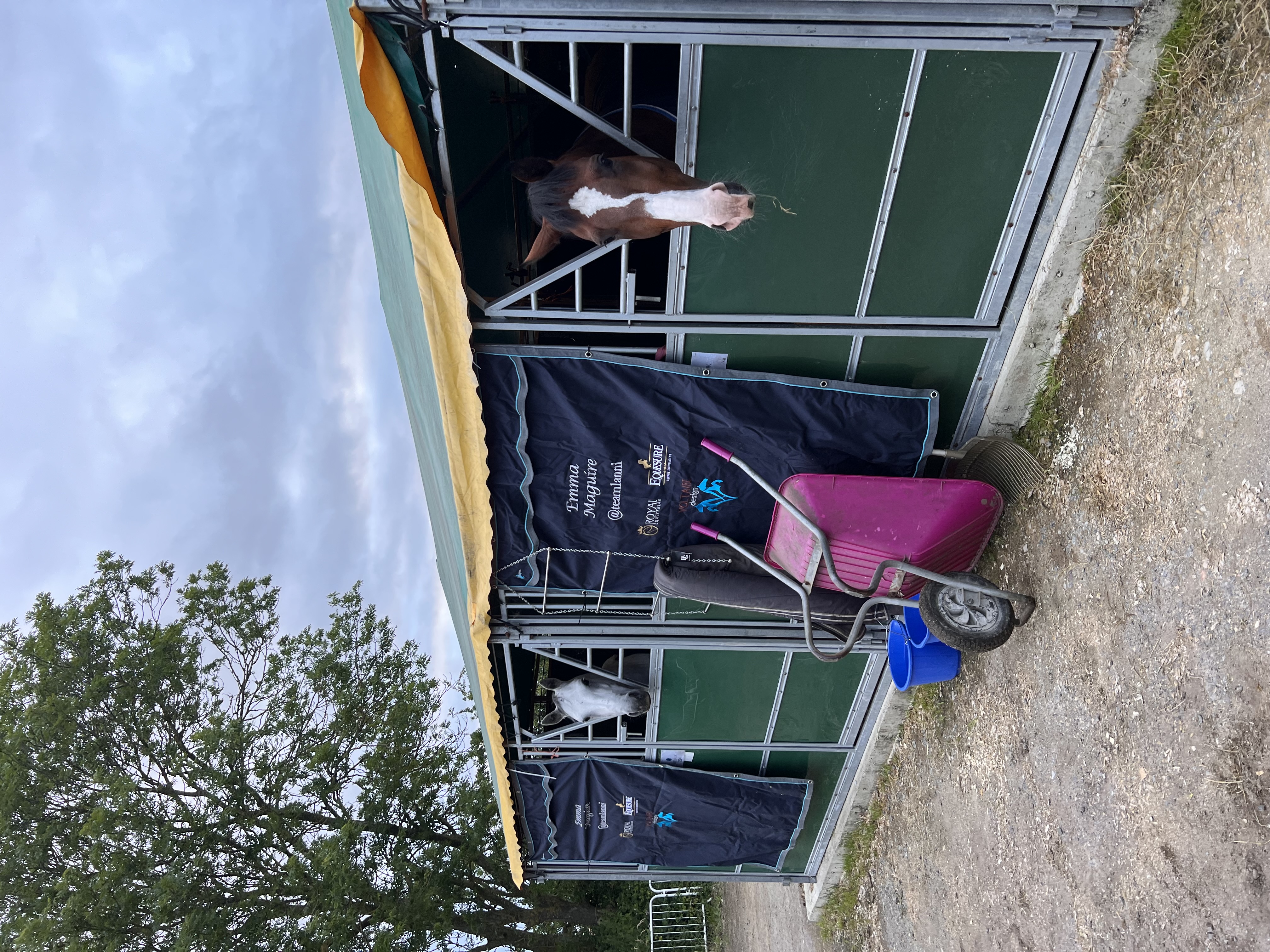When we think of our horse’s physical anatomy, we perhaps tend to focus on their flowing mane, intelligent eyes, noble bearing or their powerful legs.
A part we might not give an awful lot of thought to is their tongue. However, this would be a big mistake as the equine tongue can have a huge influence on not only their digestion but also their behaviour, and performance.
If you need your knowledge broadened then read our guide to the horse’s tongue. From its complicated structures to common tongue complaints, we’ve got it covered.
Remember that from the tip of their tongue to the end of their tail insurance for a horse from Equesure will keep your equine friend protected whatever happens. Give our experienced team of insurance specialists a call today for a quick quote.
Amazing anatomy – the horse tongue structure
When roaming free in the wild, horses will spend between 15 and 18 hours a day foraging for enough food to keep their powerful bodies in tip-top shape. So, the most efficient intake, sorting and chewing of grass, hay and feed is vital to keeping an equine both happy and healthy.
While we’re all well aware of the various important roles that teeth perform and how to spot problems, nothing would get done without the tongue – after all its primary job is to keep a horse well fed!
The often-overlooked tongue is a large, muscular organ made up of a complex arrangement of blood vessels, nerves and distinct muscles that control the movement of the tongue when feeding and breathing. These muscles include the:
- Genioglossus that protracts the tongue.
- Hyoglossus that flattens the tongue and pulls it backwards and downwards.
- Styloglossus that retracts the tongue.
The horse’s tongue is highly sensitive and reacts to a range of stimuli including heat, pressure, pain and taste.
The sides and underneath of the tongue itself are covered by a thick mucous membrane (mucosa) that keeps it constantly moist. This allows food to move freely around the mouth without getting stuck against the teeth.
When a horse’s tongue is relaxed, it sits on the floor of the mouth, resting gently below the hard palate of the mouth’s roof. In normal circumstances the tongue will lie in the centre of the mouth between the lower teeth.
The tongue is attached to the lower jaw by a membrane called the lingual frenulum which plays a vital role in chewing and swallowing. Meanwhile the back of the tongue is attached to the hyoid bones that also connect to the jaw.
These are then connected to a group of further muscles that extend to the sternum, shoulder and forelegs. Amazingly these muscles then extend even further into the breast, pectoral and abdominal muscles and on to the pelvis!
No wonder the action of a bit in a horse’s mouth can have such an impact upon the rest of its body when working. Unfortunately, it’s also possible to see why the old practice of holding or pulling a horse’s tongue as a form of restraint is so discouraged now.
The first element of the digestive process in which the tongue plays such an important part is that of prehension. Prehension is where the lips, front teeth and highly-mobile front section of the tongue combine together to grasp and move feed into the mouth.
With its amazing ability to retract and protrude, the end of the tongue is perfectly designed to enable the horse to decide what it wants in its mouth – removing unwanted or unsuitable objects before they can be ingested or cause damage. They really are adept at eating only the choicest morsels of food.
Once food is in the mouth, the horse chews in a circular fashion. To help guide this the entire upper surface of the tongue is covered in specialised protuberances called papillae. These cause the food to stick to the tongue so the horse can press it up against the ridged roof of the mouth.
This, in turn, forces the food to be moved over to the chewing surfaces of the teeth where the heavy-duty work of grinding takes place.
The tongue is very involved in feeding this grinding action as the food is passed by the tongue towards the back of the mouth. Indeed, as more grinding takes place, more saliva is produced, which helps with digestion in the stomach. It really is an incredible eating machine!
When the food has been thoroughly chopped, crushed and pulverized it forms into a ball of food.
This bolus then encounters the lingus (a thick area of the tongue starting at the region of the first cheek teeth) which pushes it back through a rhythmic muscle action. Until the bolus finally reaches the oesophagus, ready for swallowing.
But the tongue’s role doesn’t just stop there. It’s also responsible for cleaning the teeth by dislodging leftover food and debris and using its saliva covered surface to wash over the teeth.

A guide to tongue troubles
A horse has a powerful set of jaws and spends much of its time feeding, so it’s perhaps not surprising that their tongues are susceptible to injuries such as bruising, ulcers, lacerations and punctures. Particularly that highly mobile and very busy front section.
While a large blood supply combined with plentiful saliva can sometimes make such injuries appear worse than they are, often you may not even know that your horse has picked up an injury.
That’s why it’s so important to conduct a regular mouth check as part of your daily horse care – as well as booking in a regular dental health check-up. Remember, it’s not just the teeth that need looking after!
Fortunately, the vast majority of injuries are readily treatable and offer a good prognosis if appropriate action is taken. Having the confidence to call and speak to your vet about any concerns is an important reason to have horse insurance in the first place.
These symptoms could indicate a horse is experiencing tongue pain or discomfort and should be investigated further:
- Quidding – Look out for your horse deliberately dropping balls of partially chewed food or spilling food from their mouth.
- Not eating or losing weight – If they can’t chew properly this can cause a loss in appetite or reluctance to eat. This unwillingness to take in adequate amounts of feed can cause weight loss or difficulty in maintaining body condition.
- Not drinking – A horse with a mouth injury may also not want to drink – it’s important to be aware of the risk of dehydration in this case.
- Excess saliva – Sometimes called slobber mouth, the presence of excess saliva may indicate tongue pain or disease. Also watch out for a discharge from the nose or mouth.
- Bad breath – Rotten food and soft tissue in your horse’s mouth can cause bad breath.
- Bleeding from the mouth – An obvious sign of injury. Due to the extensive blood supply within the tongue any injury is likely to bleed heavily. While the amount of blood loss can seem severe, it doesn’t usually cause serious health issues for the horse.
- Swelling of the tongue and/or cheeks – Sores and swellings around the mouth, jaw or cheeks need to be investigated by a professional.
- Standing with their head outstretched – A sign that your horse might be in pain.
- Resistance to the bit or to handling of the head – Pain can cause the horse to change its behaviour such as becoming more aggressive and more resistant.
- Tongue hanging from mouth – If you notice unusual tongue positioning such as poking their tongue out then have your vet make a thorough examination. Pay particular attention to the fit of any tack being used.
- Discolouration – A healthy tongue should be pink and moist, although it may be stained by plants and dirt.
Common causes of tongue injuries include:
- Bit injuries – The tongue can be cut when extreme pressure or a scissoring action occurs from a bit. While poorly-fitted or harsh bits are of primary concern, even a gentle, well-adjusted bit in the wrong hands can cause painful injury. Accidental damage to the tongue can also occur if a horse is tied by or becomes tangled in the reins and pulls back forcefully. How to choose the right bit for your horse is an important consideration for any horse lover – just like finding the most suitable horse insurance for your trusty steed.
- Blunt-force trauma – Horses are very active creatures and depending on their age and temperament can get themselves into some scrapes. A fall during training, running into an object, or an accidental kick to the face from a field mate can all cause a horse to bite or injure its tongue.
- Sharp objects – The tongue is a powerful but sensitive organ. When feeding or otherwise going about their everyday business, common objects such as wire, pieces of metal, harsh plants and wood splinters can easily become lodged in the soft tongue tissue.
- Sharp teeth – Dental points, edges and caps can also result in painful tongue sores and ulcers. Horses may even bite their own tongue by accident when feeding. Horse teeth take a lot of punishment, and wear is often uneven. This can lead to sharp edges and hooks developing on the molars which cut into the tongue and cheeks. To prevent discomfort and possible infection, regular filing (also called floating) of these should be performed by a trained professional.

Diagnosis and treatment
Diagnosis of a tongue injury is usually based on clear clinical signs and a thorough oral examination (often requiring sedation), a speculum and a decent torch. Other diagnostic aids such as x-rays or ultrasound may also be required.
Treatment of the initial cause of the injury is key but due to the tongue’s good blood supply and heavy saliva flow even serious injuries have a good prognosis.
Serious trauma and removal of foreign objects may require stitches, while some injuries may even require amputation of parts of the tongue. But don’t despair, many horses that experience such trauma can still manage to lead a full and happy life using their lips and teeth to help them eat.
Depending on the nature of the injury anti-inflammatories and antibiotics may also be prescribed. While a tongue injury is healing, it’s important to offer watered-down feeds. Try to avoid riding your horse with a bit until the injury has healed completely.
Diseases affecting the tongue
Fortunately, while there are certain underlying diseases and infections that can trigger tongue-related symptoms these are fairly uncommon.
- Temporary paralysis or weakness can be caused by inflammatory diseases, upper respiratory infections, meningitis, botulism, encephalomyelitis, or brain abscesses.
- Vesicular stomatitis – An infectious disease that can cause lesions on the tongue and other areas of the mouth.
- Papillar stomatitis – Viral papillomas (warts) that are found around the lips and mouths of young horses.
- Actinobacillosis, sometimes known as wooden tongue, is a bacterial infection that may, as the name suggests, lead to a hard tongue, sometimes accompanied by sores and swelling.
Horse insurance through Equesure
As you can see, even the least regarded part of a horse can have a huge impact on its health and wellbeing. With over 60 years’ combined experience in the equine insurance market, our team of specialists can offer you a bespoke insurance policy with options tailored for the particular needs of your horse.
In terms of the all-important vet’s fees cover there are three options for owners to choose from:
- Option 1 – £4,500 per incident with unlimited claims in the year
- Option 2 – £7,500 per incident with up to £15,000 in the year
- Option 3 – £5,000 per incident with £2,500 top up for life-saving surgery
Multi-horse policies are also available when you have more than five horses.
Additional benefits can include:
- Saddlery and tack cover
- Personal accident cover up to £20,000
- Public liability cover up to £2 million
We can even arrange cover for the popular sport of horseboarding!
Give our team a call today on 01480 220089 – they’ll be happy to discuss the variety of horse insurance policies available.
Policy benefits, features and discounts offered may very between insurance schemes or cover selected and are subject to underwriting criteria. Information contained within this article is accurate at the time of publishing but may be subject to change.





